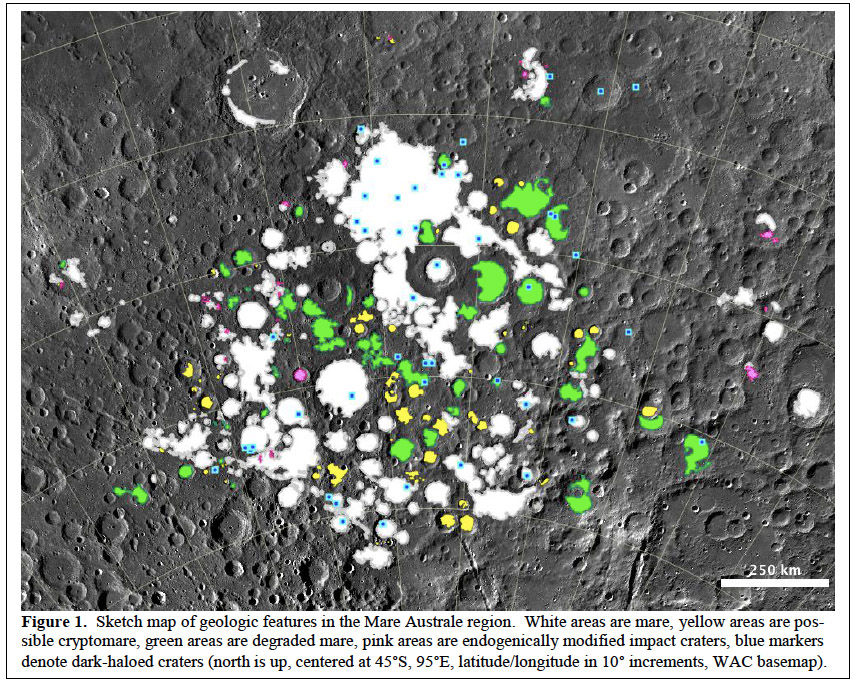Difference between revisions of "May 26, 2014"
| Line 15: | Line 15: | ||
<p><b>Tomorrow's LPOD:</b> [[May 27, 2014|Colorful Revelations]] </p> | <p><b>Tomorrow's LPOD:</b> [[May 27, 2014|Colorful Revelations]] </p> | ||
<hr /> | <hr /> | ||
| + | {{wiki/ArticleFooter}} | ||
Revision as of 18:39, 7 February 2015
Growing Australe

image map from Lawrence et al, 2013 (PDF)
Australe is an odd mare and an odd impact basin. As a mare it is largely discontinuous. Some mare deposits are continuous, especially the large white area near top of the diagram, but many others are discrete, filling crater floors and low spots between craters. Sam Lawrence and colleagues used LRO multispectral image data to confirm and extend prior mapping of more extensive mare regions; green areas on the map are older, degraded maria, and the yellow areas are cryptomaria, mare lavas that have been covered with ejecta so that they don't have the spectral reflectivity of clean maria. So far, the LRO data has not provided confirmation that Australe is an impact basin. It is somewhat lower in the center than the edges, but not smoothly so as at other basins, and the proposed two rings that enclose it are still controversial. Perhaps the most convincing, but circumstantial evidence is the approximately circular distribution of mare deposits. LRO topo data show that the older lavas (based on stratigraphy and crater counts) are visible at higher elevations, while younger lavas occur at deeper locations; this is similar to Serenitatis and other basins where older lavas covered the entire basin floor, and more limited younger lavas only reached the surface in the central, deeper parts of a basin, covering the old lavas there. The existence of many discrete lava patches indicates that there were many different conduits to the surface. Other data on lava compositions and ages also show that different source regions were tapped, and that some were long lasting and other were more time limited in output. Australe has a much smaller volume of lava than many nearside basins (as does nearby Nectaris), allowing Lawrence and colleagues to suggest that its multiple sources and differing durations of eruption may have also occurred in basins where thicker lava deposits hide their history. Interestingly, the basin most similar to Australe is the nearby South Pole-Aitken Basin which is also patchy and lacks complete rims. Both basins are quite old, but one is shallow and the other very deep - why?
Chuck Wood
Related Links
21st Century Atlas charts L3 & B3.
Yesterday's LPOD: And the Winner Is
Tomorrow's LPOD: Colorful Revelations
COMMENTS?
Register, Log in, and join in the comments.



